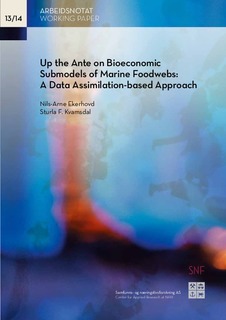| dc.description.abstract | While economists have discussed ecosystem-based management and similar concepts, little
attention has been devoted to the art of modeling. Models of ecosystems or foodwebs that
make economic analysis viable should capture as much as possible of system structure and
dynamics while balancing biological and ecological detail against dimensionality and model
complexity. Relevant models need a strong, empirical content, but data availability may
inhibit modeling efforts. Models are bound to be nonlinear, and model and observational
uncertainty should be observed. We suggest the data assimilation method ensemble Kalman
filtering to improve modeling of ecosystems or foodwebs. To illustrate the method, we model
the dynamics of the main, pelagic species in the Norwegian Sea. In order to reduce the
parameter dimensionality, the species are modeled to rely on a common carrying capacity.
We also take further methodological steps to deal with a still high number of parameters.
Our best model captures much of the observed dynamics in the fish stocks, but the estimated
model error is moderate. | nb_NO |
